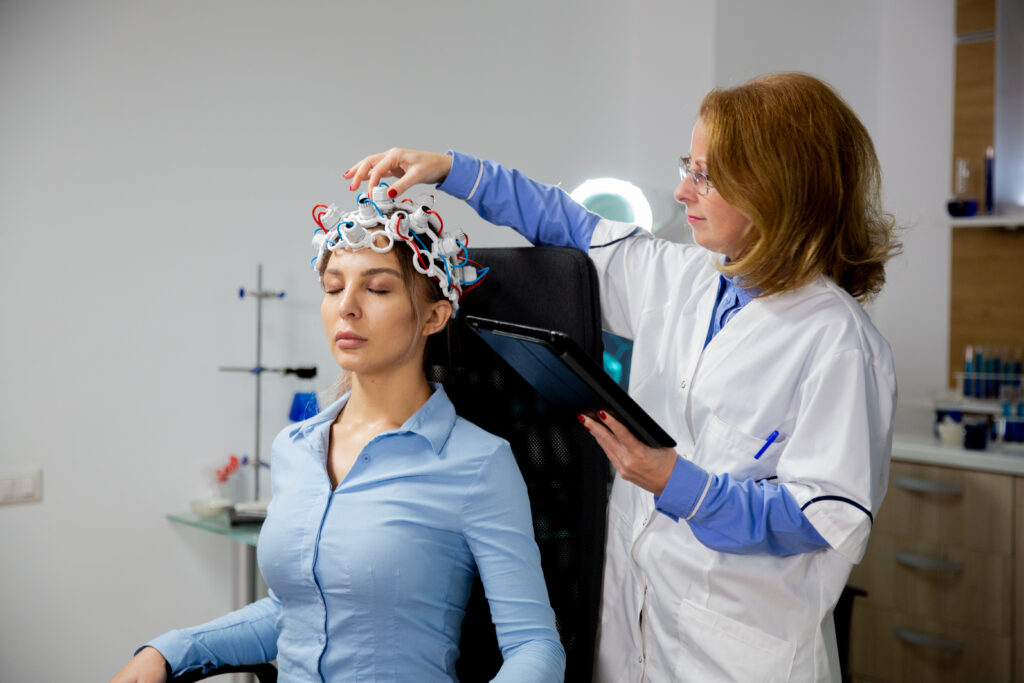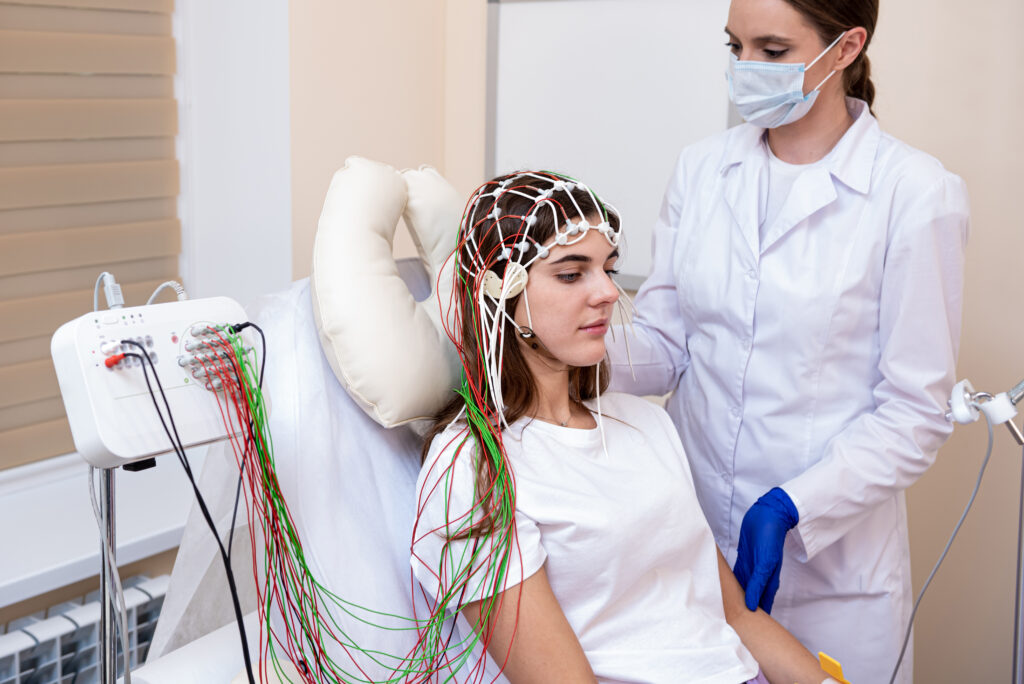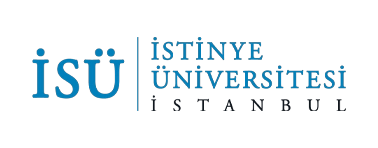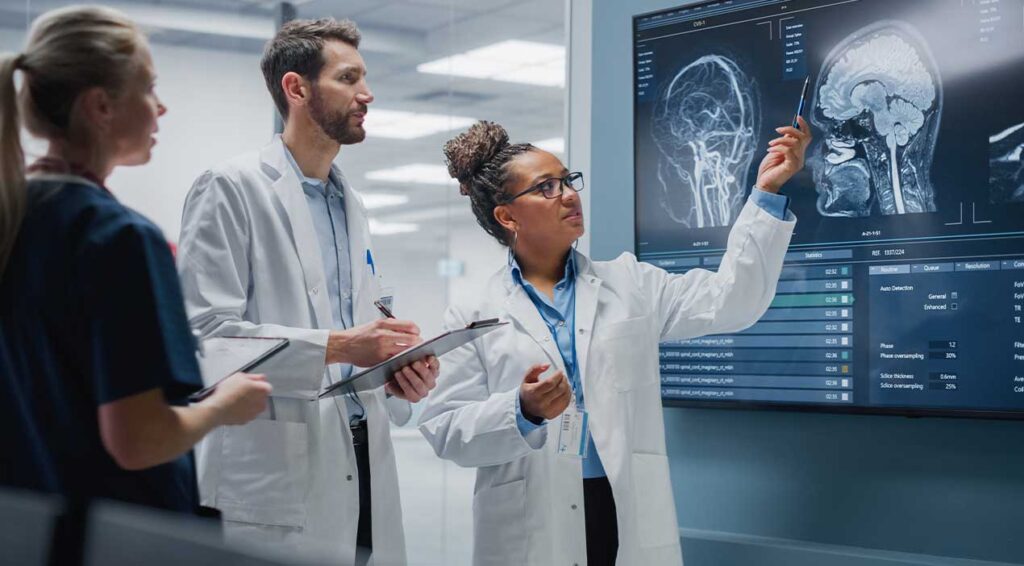Understanding Transcranial Magnetic Stimulation: A Modern Approach to Neurological Wellness
The field of neurological science is in a constant state of evolution, seeking more refined and effective ways to support brain health. For decades, the primary approaches to managing complex brain-based conditions have been pharmacological and talk-based therapies. While these methods remain fundamental, medical technology has introduced a powerful new modality: neuromodulation. This category of treatment aims to directly interact with and gently guide the brain’s own electrical activity.
At the forefront of this technological wave is Transcranial Magnetic Stimulation, commonly known as TMS. This sophisticated, non-invasive technology represents a significant advancement in how we approach certain persistent neurological and psychiatric conditions. It is not a medication and does not involve surgery. Instead, it uses a fundamental principle of physics—electromagnetism—to stimulate specific, targeted areas of the brain. This approach offers a new avenue of care for individuals who may not have found adequate relief from traditional interventions, providing a modern tool in the comprehensive pursuit of mental wellness.

What is Transcranial Magnetic Stimulation?
Transcranial Magnetic Stimulation is an advanced medical procedure that uses focused magnetic fields to interact with nerve cells in the brain. The core concept is based on Faraday’s law of induction: a changing magnetic field can create a small, localized electrical current in a conductor. In this case, the conductor is a specific region of the brain.
During a TMS session, an electromagnetic coil is precisely placed against the scalp near the area of the brain targeted for treatment. The device then generates short, repetitive magnetic pulses that pass harmlessly through the skull and into the underlying brain tissue. These pulses create a very small and controlled electrical current that excites or inhibits neurons in the targeted region.
The goal is to modulate the activity of brain circuits that are known to be underactive or overactive in certain conditions. For example, in individuals with major depression, studies have often shown reduced activity in the left prefrontal cortex, a key area for mood regulation. TMS can be used to deliver stimulatory pulses to this area, aiming to “reactivate” it and help restore a more balanced state of function. It is a testament to our growing understanding of the brain as an interconnected electrical and chemical system.
The Science Behind the Procedure
The human brain is an incredibly complex network of billions of neurons that communicate using tiny electrical and chemical signals. This communication forms “circuits” or “networks” that control everything from our movements to our emotions. When these circuits are disrupted or become imbalanced, it can lead to various neurological and mental health challenges. TMS is designed to directly address these network-level disturbances.
How Magnetic Fields Influence Brain Activity The TMS device’s coil is designed to create a very precise and rapidly changing magnetic field. When this field interacts with the brain, it induces electrical currents. These currents are strong enough to depolarize the neurons, causing them to fire—the same way they fire naturally. When this is done repetitively, it can lead to lasting changes in the brain’s “excitability.”
This process is known as neuroplasticity—the brain’s remarkable ability to reorganize itself by forming new neural connections. Repetitive stimulation with TMS is believed to enhance neuroplasticity, essentially helping the brain to re-learn healthier patterns of activity. The frequency of the magnetic pulses determines the effect: high-frequency pulses generally increase brain activity (excitatory), while low-frequency pulses tend to decrease it (inhibitory).
Targeting Specific Brain Networks Before a course of treatment begins, a specialized practitioner performs a “mapping” process. This involves finding the precise location on the patient’s head that corresponds to the desired brain region. This is often done by locating the motor cortex first—the part of the brain that controls hand movement. The practitioner delivers single pulses until they find the spot that causes a small, involuntary twitch in the thumb. This “motor threshold” serves as a landmark and helps determine the correct stimulation strength for that individual’s unique physiology.
Once this mapping is complete, the coil is moved to the specific treatment location, such as the dorsolateral prefrontal cortex (DLPFC) for depression. This precision ensures that the stimulation is focused only on the circuit that needs modulation, leaving the rest of the brain unaffected.
The TMS Procedure: A Patient’s Perspective
For many individuals, the prospect of a new medical procedure can be daunting. However, the experience of receiving TMS is often described as straightforward and comfortable. It is an outpatient procedure, meaning it is performed during a visit to a specialized suite, and the individual can leave immediately afterward.
Preparation and Comfort When arriving for a session, the individual is escorted to a private room and settles into a specially designed, comfortable chair, similar to a reclining dentist’s chair. Because the device produces a tapping or clicking sound with each pulse, the person is given earplugs or other hearing protection for comfort.
Unlike some other procedures, TMS is performed while the person is fully awake, alert, and conscious. There is no need for sedation or anesthesia of any kind. This is a significant advantage, as it allows the individual to be an active participant in their care and to resume their day without any “downtime.”
During the Session Once the person is comfortable, the practitioner will place the electromagnetic coil gently against their head at the pre-determined location. The session then begins. The individual will hear a series of clicks and feel a corresponding tapping sensation on their scalp. This sensation is generally not painful, though it can feel strange during the first one or two sessions until the person becomes accustomed to it.
The team monitors the individual throughout the entire process to ensure their comfort. A standard session of repetitive TMS (rTMS) can last anywhere from 20 to 40 minutes. Newer protocols, such as Theta Burst Stimulation (TBS), can deliver a full treatment in as little as three minutes.
After the Session Immediately following the session, the individual is free to leave and go about their normal day. They can drive, return to work, attend social engagements, or go home. There is no recovery period. This non-invasive nature allows the treatment to be integrated into a person’s life with minimal disruption.
A full course of TMS typically involves sessions five days a week for a period of four to six weeks. This consistent, repetitive stimulation is what helps the brain build new, lasting pathways.
Applications of TMS in Modern Medicine
While initially developed for research, TMS has become a vital clinical tool, approved by regulatory bodies worldwide for specific and difficult-to-treat conditions.
Major Depressive Disorder (MDD) The most common and well-established application for TMS is in the treatment of major depressive disorder, particularly for individuals who have not experienced sufficient improvement from conventional treatments. These individuals are often referred to as having treatment-resistant depression. The ability of TMS to directly stimulate the brain’s mood-regulating circuits in the prefrontal cortex offers a completely different mechanism of action from oral medications, providing a new option for relief.
Obsessive-Compulsive Disorder (OCD) TMS has also been adapted to address obsessive-compulsive disorder. This often involves a specialized coil design, known as Deep TMS (dTMS), which can stimulate deeper and broader brain regions. For OCD, the coil targets a part of the brain called the anterior cingulate cortex, which is involved in emotional regulation and error detection, circuits that are hyperactive in OCD.
Other Conditions The technology is also approved for other conditions in various parts of the world, such as for smoking cessation and to alleviate symptoms of anxious depression. Furthermore, research is actively underway to explore its potential for a wide rangeof other neurological and psychiatric conditions, including post-traumatic stress disorder (PTSD), chronic pain, anxiety disorders, and recovery from stroke. This expanding field of research highlights the versatility and potential of neuromodulation.

Types of TMS Technology
As the field has matured, different types of TMS protocols and devices have been developed to optimize treatments.
Repetitive TMS (rTMS) This is the most common form of TMS. It involves delivering magnetic pulses in repetitive sequences or “trains.” As mentioned, it can be high-frequency (e.g., 10 pulses per second) to stimulate brain activity or low-frequency (e.g., 1 pulse per second) to reduce it.
Deep TMS (dTMS) Deep TMS uses a different coil design, known as an H-coil, which is shaped to fit around the head more like a helmet. This design allows the magnetic pulses to penetrate deeper into the brain and stimulate a wider area. This capability is what allows it to be effective for conditions like OCD, which involve brain structures located deeper than the prefrontal cortex.
Theta Burst Stimulation (TBS) This is a more recent and much faster protocol. It delivers magnetic pulses in a unique pattern that mimics the brain’s natural “theta” rhythm, which is a brainwave pattern involved in learning and memory. This pattern appears to induce neuroplastic changes very rapidly. An entire iTBS (intermittent Theta Burst) session, which is stimulatory, can be completed in just three minutes, making it a much more convenient option for many individuals.
Commitment to Advanced Neurological Care at Liv
At Liv, we are dedicated to being at theforefront of medical innovation. We believe in integrating the most advanced, proven technologies to provide our patients with a comprehensive spectrum of care. The inclusion of Transcranial Magnetic Stimulation within our medical technologies portfolio reflects this commitment.
We understand that technology, no matter how sophisticated, is only as effective as the team that wields it. Our approach is built on a foundation of human expertise. Our multidisciplinary teams of specialists, including neurologists, psychiatrists, and trained technicians, collaborate to create a personalized care plan for every individual. They oversee every aspect of the TMS process, from the initial assessment and precise brain mapping to the daily administration and monitoring of treatment.
Our goal is to provide a supportive, compassionate environment where individuals can access the latest advancements in neurological care. By combining human expertise with state-of-the-art technology, we strive to help our patients navigate their path to wellness and achieve the best possible quality of life.


